- Home
- TV History
- Network Studios History
- Cameras
- Archives
- Viewseum
- About / Comments
Skip to content


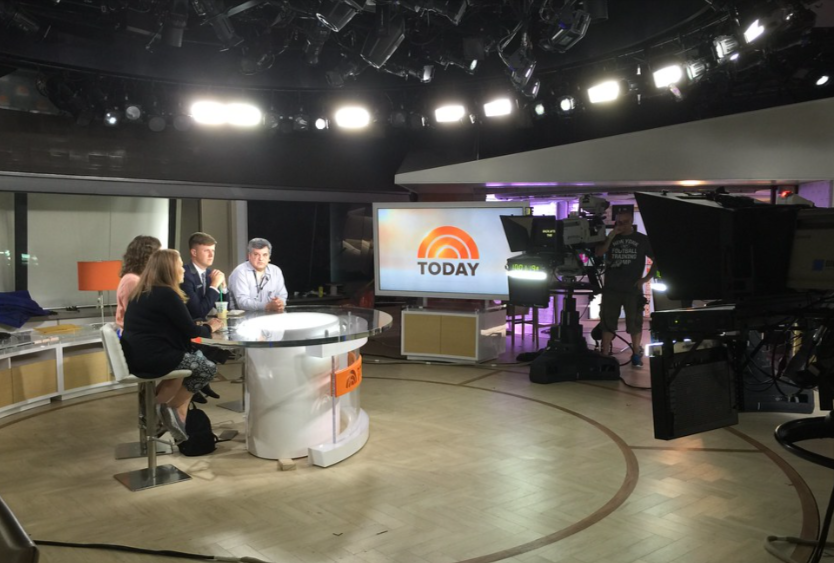
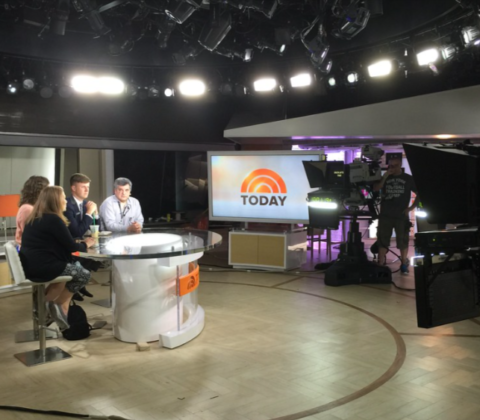
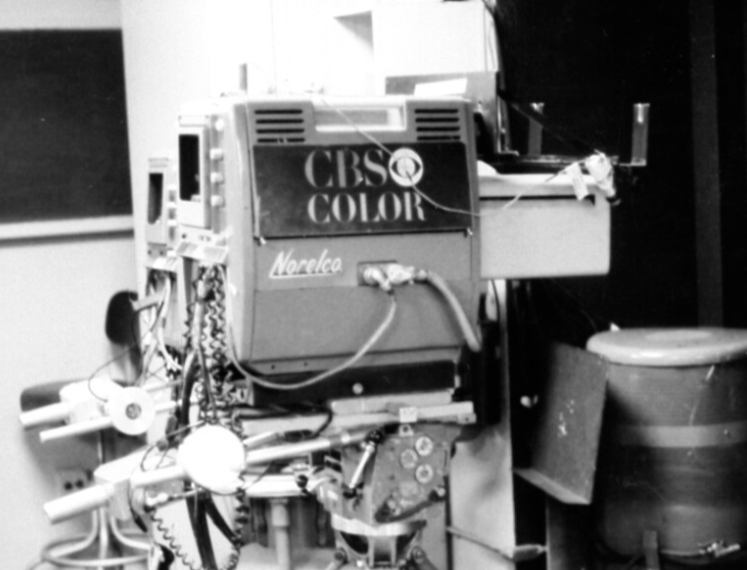
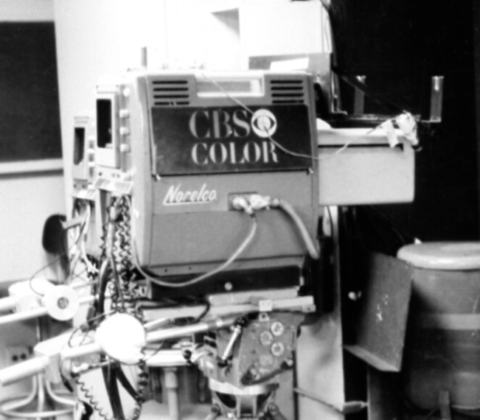
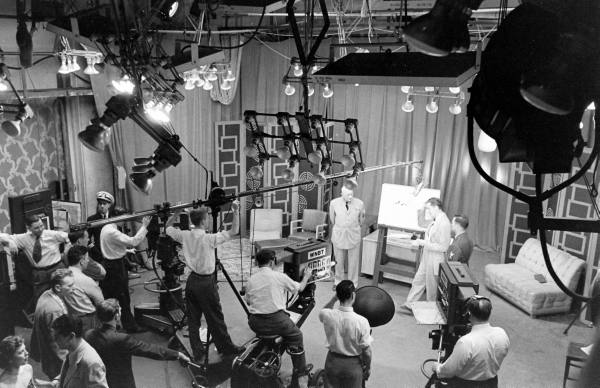
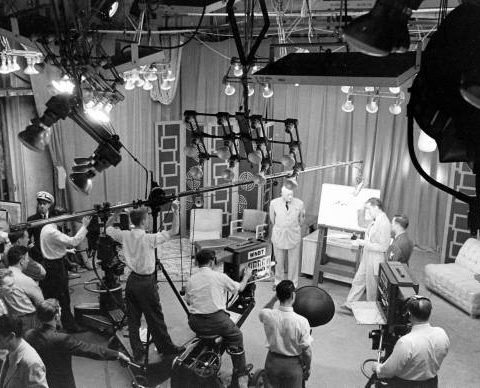
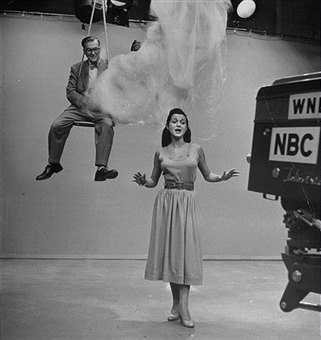


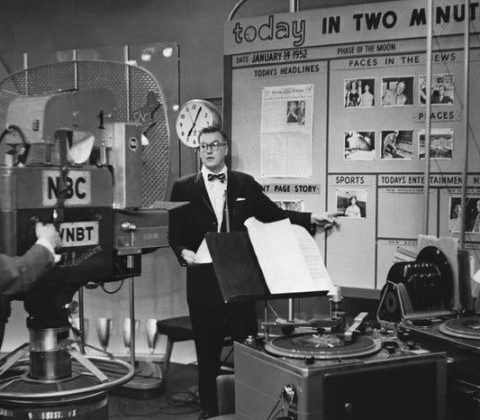
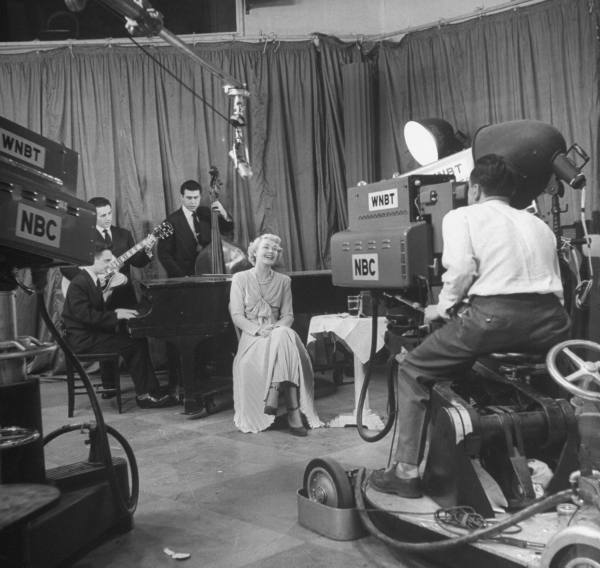

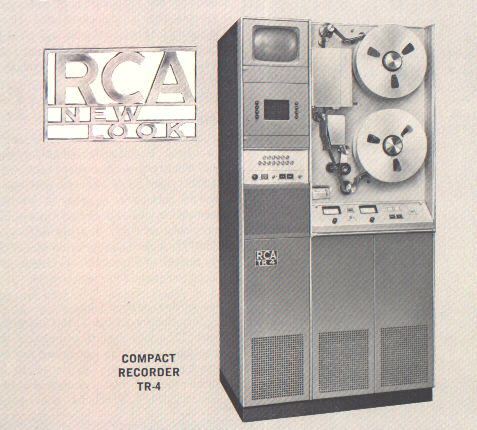
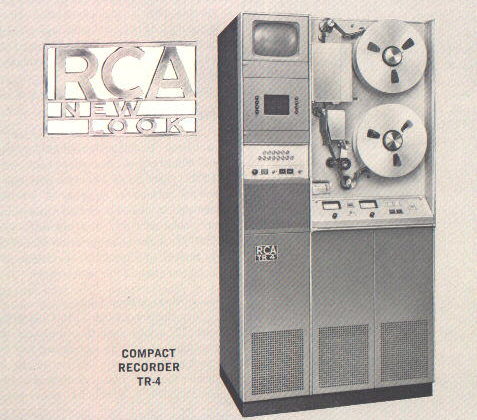

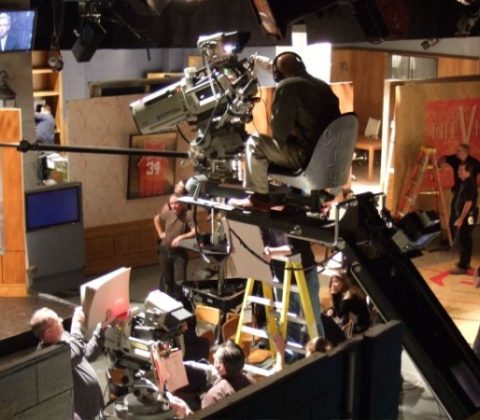
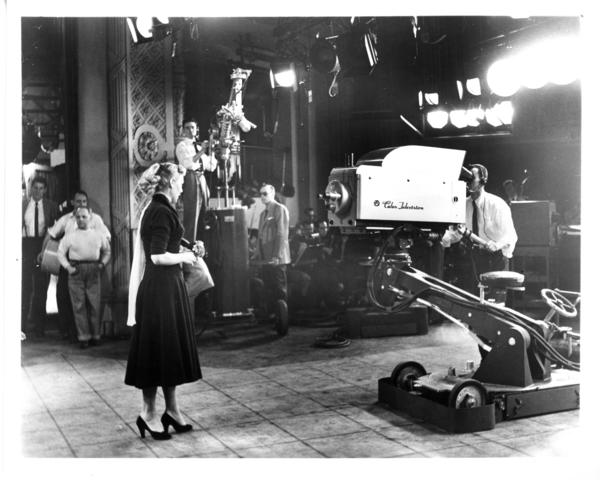
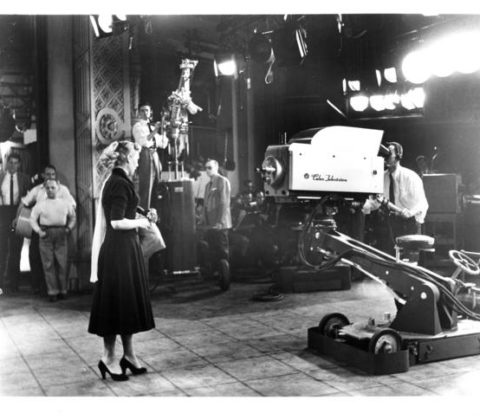
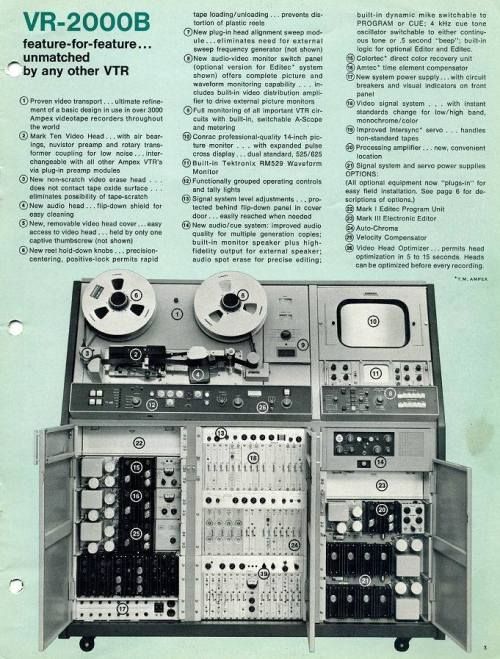
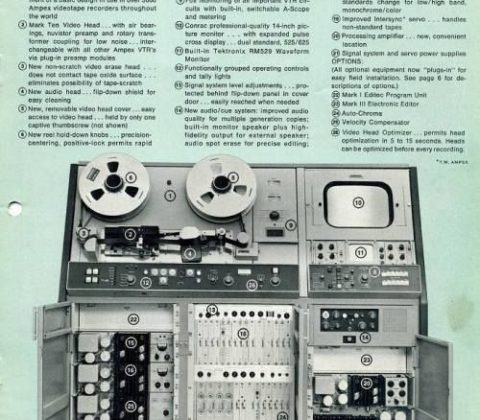
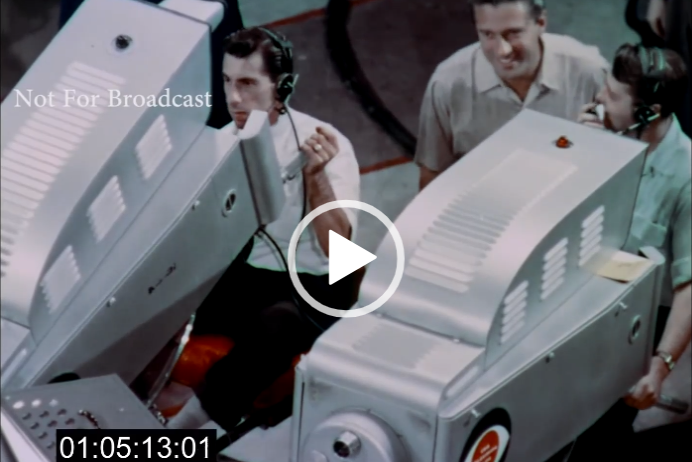
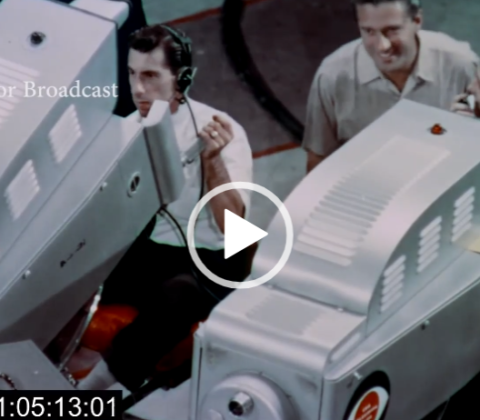
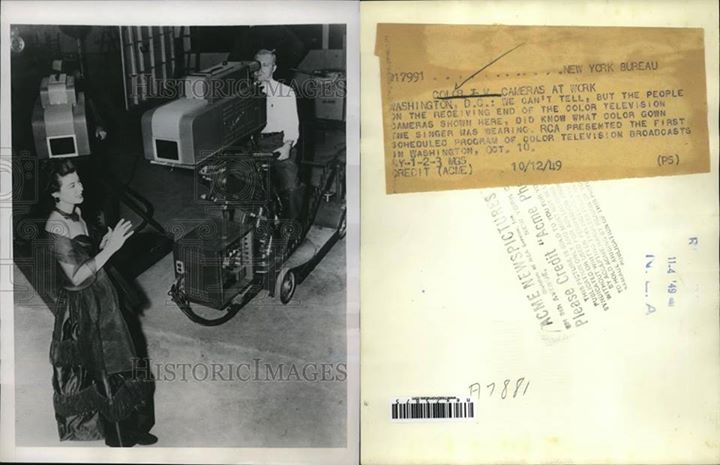

Posts in Category: Viewseum
Viewseum
On April 26, 2021
- Viewseum

The Viewseum is a portal for viewing things that belong in a museum of rare moving images…all gathered in a central location. These videos and curated photographs have been collected to tell a story of television in action. This is a living history of broadcasting that spans the decades, as far back as the first transmissions, to the latest in the network studios and everything in between. There are video tours of historic TV landmarks, moving image stories about the first studios, first cameras, first color, first videotape and a hundred surprises that come in every shape form and fashion.


NBC COLOR PERFECT PROMOS FROM THE ’60S
On January 25, 2024
- TV History, Viewseum
Here, back to back, are two :60 second promo’s from NBC, touting their color abilities in the mid 1960s. You have to give them and RCA credit as the leaders in color. No one was better, but unfortunately, when these transfers were made from film to video a few years ago, the master prints had sufferd some major fading and these did not look at all “perfect”. Thanks to our NBC bretheren, we are able to verify that the director shown in the first promo is the great sports director Harry Coyle and the lighting director in the second promo is Bill Klages.
We’ve had some help from our friend Marc Wielage, who is a master Hollywood colorist, to help these look better. Marc says the 16mm print had turned magenta over time and there are basicly no greens or blues left, but with his careful touch, these rare gems do look much better than they did when we sent them to him. In addition to Marc’s help, many thanks to Mike Clark in Los Angeles for finding these in the first place.


Over 1,250 Curated Photos…Inside NBC 1976-79 & 2004-17
On October 1, 2023
- Viewseum
THIS is the granddaddy of network photo tours! Our good friend Dennis Degan spent many years at 30 Rock and kept a photographic record, that to this day, serves as a historic guide to studio makeovers, new control rooms, cosmetic construction and a general documentation of what was going on inside the studios of NBC New York. This top link takes you to gallery of 1,153 images made between 2004 and 2017. The second link brings up photos and information from 1976 through 1979, so click the link and be sure to notice the captions on each image when you move your mouse over the lower left corner. Enjoy!
250 Curated, Behind The Scenes Photos
On October 1, 2023
- Viewseum
Ever see the inside of the Unitel Studios in New York, or the SESAME STREET sets at Reaves Teletape Studio 81, or WTCG’s Atlanta studios? Even if you have, you’ve never seen pictures like these from our good friend Dennis Degan! Also in this great collection of photos are production shots from Elton John’s Central Park concert, WSPA TV, WSB TV and Radio, WAGA TV, KYW TV, WIC TV, WYEA TV, the Top Of The Rock at 30 Rockefeller Plaza and more. Be sure to notice the captions on each image when you move your mouse over the lower left corner.
Various Photos 1974 to 2007 | Flickr



Inside CBS Broadcast Center, 1978 Photo Tour
On October 1, 2023
- Viewseum
At this link are 29 classic images taken and shared by our dear friend Dennis Degan. Through the course of his television carier, he has worked as engineer and editor but is also a first rate photographer so enjoy! Be sure to notice the captions on each image when you move your mouse over the lower left corner.
https://www.flickr.com/photos/dennisdegan/sets/72157600588273750/


Ultra Rare…Inside NBC’s New York Studios 1950
On September 20, 2023
- TV History, Viewseum
As TV was taking off in 1950, NBC and others struggled to find studio space in New York. This rare film shows us, in more detail than we have ever seen, the course those efforts with a look inside not only the “Radio City” 30 Rock building, but also the International, Center and Hudson Theaters and thankfully, the “missing link” is shown here too…NBC’s Uptown Studios at 106th Street. There is a lot more here, including film of the NBC Kinescope department, the renovation of Studio 8H for TV, a new Master Control and much more. This film has been out of sight for decades but has now resurfaced, complete with narration by NBC’s first television news anchorman John Cameron Swayze.
A huge thanks to TV historian Alec Cumming and Ken Aymong at SNL for locating and preserving this fabulous NBC Studio history archive! -Bobby Ellerbee
EXCLUSIVE! 1963 Video Tour Of The Ed Sullivan Theater…A One Of A Kind Look Behind The Scenes
On October 17, 2022
- Viewseum
With many thanks to The University of Indiana Libraries Moving Image Archive, we are very happy and proud to be able to present an amazing piece of historic video that takes us, in two parts, first on a technical tour of CBS Studio 50, or as it is better known now; The Ed Sullivan Theater. CBS Director of Technical Services, Bob Hammer takes us from the stage, where we get a close look the Marconi Mark IV cameras, their lenses, pan heads and pedestals and to the mics and booms, all the way into the control room and even the equipment room for the most detailed look we have ever had of this historic broadcast facility. You’ll even see lens differences and Zoom demonstrations at the camera and in the control room, special effects wipes and how the cameras are shaded.
Here is Part 1
In Part 2, CBS’s Carlton Winkler, Director of Production Services leads a discussion on what this seminar is really about…production accounting, but it is not as dry as you might think! In this part you’ll see how the planning and budgeting bring about a full set that you will see erected in real time on the Sullivan stage. You’ll get to know what “above the line and below the line” costs are and a look at how the sets were built and then erected and perfected on stage, complete with a back screen projection unit adding to the reality of the scene. You’ll also see the rigging loft, stage and lighting details as this video alternates between lecture and two scenes that show the staging elements.
Here is Part 2
Originally, when this came to us from The Indiana University Libraries Moving Image Archive, this was one long presentation but thanks to our editing pro Jack Niesi (at NBC NY), we made two parts of it and were able through considerable editing (on the first part) to maximize Mr. Hammer’s oral delivery skills.
I would like to thank Jack for the long hours he spent on this project, but most especially, I want to thank or friend Dr. Mike Conway, who is a professor of Journalism at Indiana University for his help getting permission for us to use this video, as well as for writing “THE ORIGINS OF TELEVISION NEWS IN AMERICA”, which is THE BEST BOOK I have ever read on this subject.
I also wish to thank Carmel Curtis, Moving Image Curator at The University of Indiana for advocating for Eyes Of A Generation to present this information to you and to the Director of the Moving Image Archives for approving our display.
4 Minutes Of RCA/NBC Color With TK41s
On May 19, 2021
- Viewseum
This is part of the original 26 minute RCA presentation from 1956 that pitches color to the public. The full length version is linked below, but this it the good part if you (like me) love TK41s. It is such a rare occasion to see the great giants in action, that I thought it would be great just to cut to the chase here. ENJOY! -Bobby Ellerbee
Rare: Mechanical Broadcast of TV’s First Drama, The Queen’s Messenger
On May 18, 2021
- Viewseum

This is part of the first ever dramatic television broadcast called “The Queen’s Messenger” and what you are seeing in this clip below is how they shot a close up scene that concentrated on the actors hands, and what they had in them. The experiment was broadcast by GE’s Schenectady, New York television station W2XB and radio their station WGY, on September 11, 1928. It was a radio drama adapted for television and broadcast both sound and moving pictures. These were received by televisions with screens that were three inches in diameter that were set up in various places all around the city. There were special effect props for this broadcast to enhance the actors’ performance and their sounds.
There were only four actors, these two hand actors (on the right) and two face actors…a female Russian spy and a male British diplomatic courier. Only close ups were possible and there were three light projectors in the room with six photo electric cell boxes. One light projector was for the female face actor, one for the male face actor and one for the hand actors.
By the way, this is a brightly lit reenactment for the film camera, because the studio had to be twilight dark in order for the not so sensitive photo electric cells to capture the 24 lines of light projected onto the subjects.
Just to be clear, here are the elements that you just saw in the film clip.
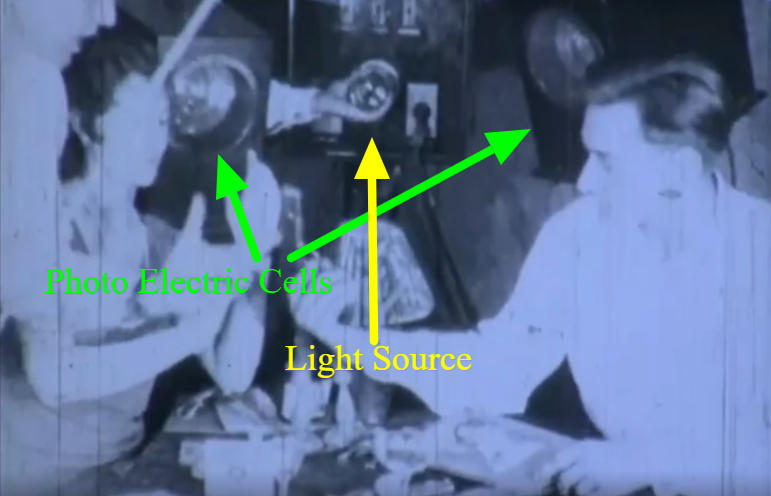
Also shown here is an April 1928 diagram of the GE mechanical television process that includes the broadcast and reception method. Notice that two radio transmitters were used in these experimental broadcasts. The visual image was broadcast on GE’s experimental shortwave station W2XB operating on 37.33 meters (7.7 MHz) and the sound was broadcast over their radio station WGY, operating on 379.9 meters (790 KHz).
The last image is a simplified version of the broadcast apparatus from an April 1928 Mechanic’s Illustrated.
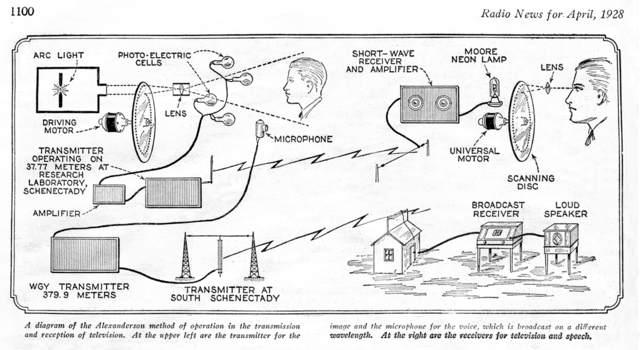
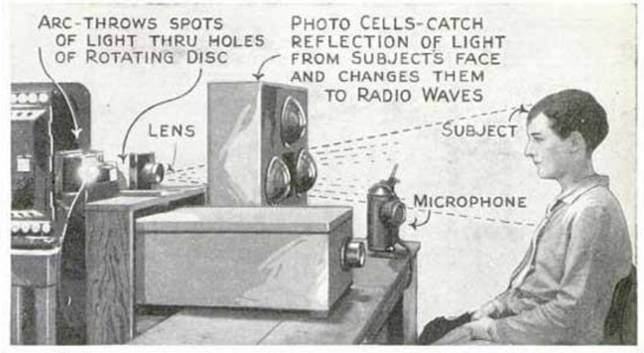


January 6, 1952…First Ever “TODAY” Promo
On May 16, 2021
- Viewseum
First Ever “TODAY” Promo, Live With Fred Allen & Dave Garroway
In preparation for a new era of television, the full staff of the new “TODAY” show began reporting to work at 4 AM, Monday January 2, 1952, to get them acclimated to their new early morning schedules, two weeks prior to the January 14th debut. This sketch/promo aired at the end of that first early rising week, on Friday night, the 6th.
This is also a rare look at “Sound Off”, a show that had rotating hosts that included not only radio star Fred Allen, seen here, but Bob Hope and Jerry Lester as well. The show only aired for a few months, and this is one of the last episodes. The announcer is Dick Stark.
I think this show came from NBC’s Uptown studios at 106 Street. Notice in the front of the gag, CBS gets dished and the “NBC Man” is called Mr. Weaver, a poke at NBC program head Pat Weaver, who of course was the creator of “Today”, “Tonight” and much more. -Bobby Ellerbee


TODAY Show Debut
On May 15, 2021
- Viewseum
It was 7 AM, January 14, 1952 when TODAY debuted on NBC. There were of course a number of innovations that came from the show, but on Day 1, it seems to me that they are already pushing the envelope with a lower third news crawl at the bottom of the screen…AND a time bug which pop in at the 2:15 mark! A television first for a daily news and entertainment program.


Inside NBC Like You Have Never Seen! Pristine “Behind Your Radio Dial” Video
On May 12, 2021
- Viewseum
About five years ago, I found this classic 1948 movie short on YouTube. It was a bad dub of a bad dub, but at least it was a rare glimpse into the history of NBC when radio was king and TV was just getting started.
As a matter of fact, this film gives us the only video record of NBC Studio 8G in action with it’s unique NBC built Image Orthicon cameras in use(https://eyesofageneration.com/the-nbc-nd-8g-cameras/)
The show they are broadcasting is television’s first non-scripted entertainment show, “Hourglass”. When you see the unusual looking cameras and the acrobatic, dancing Costello Sisters in their mini costumes, you’ll be one of the few people to not only have seen this show, but also to know what the show is and who the dancers are. https://eyesofageneration.com/?s=hourglass
I was fascinated by all the studio and building décor we were seeing…places and features that were no longer there…overcome by the march of time and the need for space to evolve at 30 Rockefeller Plaza. Before I posted the video back then, I sent a link to Joel Spector and Dennis Degan; two NBC friends that have spent decades waking these halls and noting the changes. We compared notes and I compiled a written narrative that timed with the who, what and where we were seeing on the screen.
A year later, Matias Bombal contacted me and told me he had just located at pristine copy of the 1948 movie short “Behind Your Radio Dial” there in California. His efforts led to the digitizing of that print, but he thought it would be a shame to clutter it up with “lower third” graphics and explanations on screen, so…he narrated and enlarged upon what we are seeing using his own research and updated notes from myself, Joel and Dennis.
In the top video presentation, Matias does a masterful job of narrating and showing us what we will see in the second, or bottom video presentation, which is the completely digitized, HD version of the 35 millimeter print he found in California. Our great thanks to Matias Bambal and all the people that helped find and digitize this and to NBC veterans Joel Spector and Dennis Degan. ENJOY! -Bobby Ellerbee
The Introduction:
Below “Behind Your Radio Dial” The Movie Short:
CBS Portable Prototype In Action, 1962 Belmont Stakes & ’63 Beatles Miami
On May 11, 2021
- Viewseum
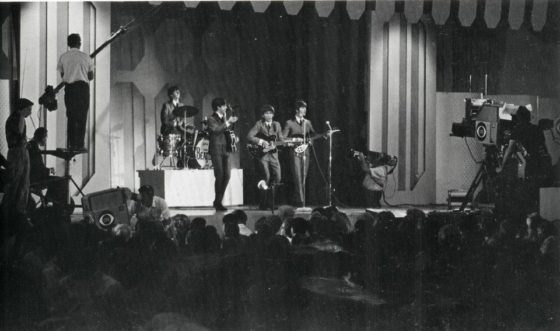
There are two videos here. The first is a great look at the first CBS portable and wireless camera developed in 1961-62 by CBS VP of Technology Dr. Joe Flaherty with help from Ikegami. There were three prototypes with one at CBS O&O KMOX in St. Louis to test for use as an “electronic new gathering” tool, one was at CBS New York for the same and more bench testing and one was assigned to the Florida bound CBS mobile units covering the many manned space missions, at the then, Cape Canaveral.
This footage at the race tracks is a perfect example of the kind of tests they subjected the camera to, and it was also brought on stage for a live demonstration during an Ed Sullivan show, I think, just a few weeks after the Belmont Stakes with Dr. Joe and a couple of the Ikegami engineers introduced during the demo.
With reference to the top photo of The Beatles on stage during the Sullivan’s live Miami show , see the image clarity that this camera makes as he shoots Ringo from a low angle (at :32 and 1:41), just like in the photo. Nice, crisp picture, just like the TK30s are giving us as, I think, they are both using the same 3.5″ image orthicon tube. Thanks to Kevin O’Keefe for the Belmont video.


RCA TR 4 Video Tape Machine Demo
On May 4, 2021
- Viewseum
This 1966 RCA demo on how their newest quad machine works is hosted by RCA’s John Wentworth and although the quality of the film capture is not a good as we would like it, the technical presentation is about as good as it gets. The TR-4 cost over $35,000 in 1966, equivalent to over $283,300 in 2021.


The BEST JOB In Live Television?
On April 28, 2021
- Viewseum
If you guessed “anything” at Saturday Night Live, you’d be 99% right, but only one job in the world is the absolute “best”. Operating Camera 1 on the Chapman Electra crane in NBC Studio 8H is the hands down winner and although seeing a video is not the same as being there, this sure goes a long way!
I’ve actually had the pleasure of being there as the crane crew’s guest and I am forever impressed with these four gents and their performance. Many thanks to John, Phil, Louis and Bob, and now Michael too! Open the video and meet them. For MUCH MORE on the historic Chapman Electra crane, go here!
https://eyesofageneration.com/teletales/studio-8h-and-the-chapman-crane/
NBC First Television Broadcast…July 7, 1936
On April 22, 2021
- Viewseum
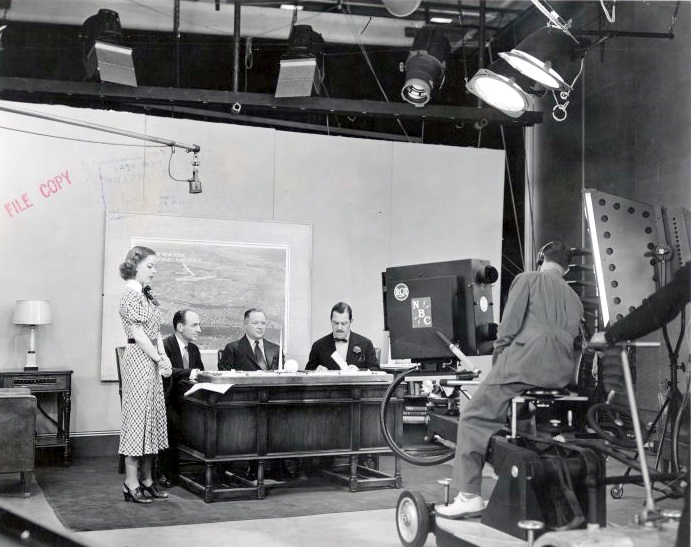
The First All Electronic Television Broadcast by RCA & NBC, July 7, 1936
The Television History Part
The video here was shot by a Pathe film camera on July 7, 1936…the day that RCA’s all electronic experimental television system was first demonstrated to an audience of people other than RCA and NBC engineers. Although the 225 invited guests this day were licencees of RCA and radio station owners that were NBC affiliates, they were still people that had only heard about this new thing called television. A news report described it this way: At David Sarnoff’s request for an experiment of RCA’s electronic television technology, NBC’s first attempt at actual programming is a 30-minute variety show featuring speeches, dance ensembles, monologues, vocal numbers, and film clips.
Just one week earlier, on June 29, 1936, television broadcast station W2XF began operation in the Empire State Building on an experimental basis for public reception. Although the signal was broadcast to the public, they had no way to receive the pictures since only RCA engineers had all of the 80 plus receivers in their homes and offices.
Further down, I’ll go into detail of who we are seeing and hearing in the film of that first day of broadcasting from Studio 3H, but first a little on what they actually saw when they looked at the screens of the 80 or so receivers in the 67th floor viewing room at 30 Rockefeller Plaza.
NBC chief engineer O.B, Hansen and his men were having serious noise problems in the amplifiers until just a few hours before the big July 7 broadcast, when they managed to solve the problem. Since white phosphorus was not yet available to use in picture tubes, these guests were seeing green phosphorus images on 9 inch round tubes with 5 by 7 inch masks…too small for most, but that’s what they had. The images were 343 line resolution “high definition” pictures on sets with 33 tubes and 14 controls.
Notice the announcer identifies the station as W2XF and not W2XBS. RCA’s earliest experimental TV transmitter was located at the Van Cortlandt Park research facility and in 1928 was designated W2XBS. The transmitter and the W2XBS designation moved to the New Amsterdam Theater on 42nd Street in 1930. The first tests on that transmitter from both locations featured the famous Felix The Cat image broadcast via the Nipkow Disc mechanical system.
The W2XF license belonged to Western Electric and Bell Labs, which early on became part of RCA. When the Empire State Building transmission facility came online 1935, that set of call letters was used, but within a couple of years, the calls went back to W2XBS and eventually became WNBT and is now WNBC. Many thanks to Frank Decker for his research into this area which you can see more of at http://w2xf.com/
What We See Here
As we get our first ever recorded look inside television’s very first all electronic studio, we see a single RCA Iconoscope camera most likely manned by NBC’s first cameraman, Albert W. Protzman. His utility man (kneeling) may be the great Heino Ripp.
On the set, on the right of course is RCA president David Sarnoff and on the left is General James Harbord who was then chairman of the board of RCA and remained so until 1947.
The next man to sit with Mr. Sarnoff is NBC president Lennox Lohr and the conversation turns to the new coaxial cable from 30 Rockefeller Plaza to the new transmitter atop the Empire State Building and to the viewing party about to start on the 67th floor.
Here we cut to film shot atop 30 Rock that same day with the new antenna in the background on the Empire State Building. As these men are introduced, remember that Mr. Sarnoff has invited the radio station owners, who are all NBC affiliates, because he wants them to immediately begin their applications for television licences for their city…to get ahead of the crowd.
(FYI, aside from the portion mentioned above, I have edited most of the other Pathe film inserts out of this to concentrate on the historic live performance in the studio. Television’s First!)
When the fashion show starts, you will hear the voice of television’s first ever female announcer…Betty Goodwin. Betty had been a newspaper reporter in Seattle, but moved to NYC in the depths of the depression to take a job in radio with NBC. After working as a production assistant at the 1936 political conventions, she was reassigned to kind of the same position in the new Television Department, which at the time was very hush-hush.
When RCA set up the experimental Studio 3H in 1935, they had kept it under wraps as competition for tech secrets was fierce. By July of ’36, RCA had decided to go public with their project, and on July 7, their first public broadcast was made from this studio for a group of radio station owners, which were NBC affiliates, watching on the 62nd floor of 30 Rock.
Next, we see the first people of color ever to appear on television. Eddie Green, a popular stage, radio and screen comedian and George Wiltshire, a well known straight man to many entertainers.
Next up, a trio of the Radio City Music Hall dancers, The Rockettes, perform a specially choreographed tap dance number.
They are followed by Broadway star Henry Hull recreating a scene from “Tobacco Road”. Hull’s greatest success as an actor was on Broadway in his portrayal of Erskine Caldwell’s Jeeter in “Tobacco Road,” which still ranks among the longest-running dramas in the Great White Way’s history, opening on December 4, 1933, and closing on May 31, 1941, after 3,182 total performances.
The singing girls that follow Hull were southern belles from Georgia, taught to harmonize by their mother. Their father, a wealthy cotton broker, loved to accompany them on piano. In the early 1930s, they moved to New York’s Park Avenue and became involved in New York, Long Island and Newport Society. A search was on at the time to find female trios to compete with the popular Boswell Sisters. The Pickenses were spotted at a party and quickly landed both a radio deal and a recording contract.
Their radio shows ran from 1932 through 1936 and they appeared in several films and in the Ziegfeld Follies of 1936.
Finishing off the broadcast is Ed Wynn, who seems slightly befuddled with the whole thing as there is no audience to play to. He is accompanied by the famous NBC radio announcer Graham McNamee.
Winn was an accomplished vaudeville comedian before he became a fixture on NBC radio when he hosted the popular radio show The Fire Chief, heard in North America on Tuesday nights, sponsored by Texaco gasoline. Like many former vaudeville performers who turned to radio in the same decade, the stage-trained Wynn insisted on playing for a live studio audience, doing each program as an actual stage show, using visual bits to augment his written material, and in his case, wearing a colorful costume with a red fireman’s helmet. He usually bounced his gags off announcer/straight man Graham McNamee; Wynn’s customary opening, “Tonight, Graham, the show’s gonna be different,” became one of the most familiar tag-lines of its time; a sample joke: “Graham, my uncle just bought a new second-handed car… he calls it Baby! I don’t know, it won’t go anyplace without a rattle!”


INSIDE NBC’S COLONIAL THEATER & RCA’S COLOR EFFORT
On January 3, 2021
- TV History, Viewseum
In all these 15 years of research, I have never found this whole black and white promotional film from RCA until just yesterday! This amazing film titled “Color Television; an NBC Documentary” shows some of the most advanced science of the day as we are taken behind the scenes not only at The Colonial Theater which was the very first color studio, but to RCA’s laboratories and factories in Princeton and Camden NJ and more.
There are many places to stop and ogle here, but I’ll point out a few highpoints for me, as they show us the prototype RCA TK40s AND the prototype of the first color camera (14:38) and the experimental Tri Color camera (19:11).
We get our first look inside The Colonial at 3:45 and our host is NBC’s Chairman, Pat Weaver. At 6:45 we see a novice actress who’s starred in NBC’s closed circuit color daily test broadcasts for two years, but by 1949 will have a TONY Award…Nanette Fabray!
At 8:40 we move to the Colonial control room with NBC Chief Engineer O.B. Hanson. No RCA promo would be complete without a few words from The General, and at the end (27:05) we get another look at the TK40 prototypes. This is just full of great, rare video of things and places we all often wondered about.
To help all of this flow better, I am including the 1953 RCA special promotional, color television magazine that covers a lot of what we see in the film that I think is also from 1953 or early ’54. By the way, notice the TK40s are mounted on the RCA friction heads that were made to hold the 90 pound TK30s of the day…not the 340 pound TK40. The good news is that Houston Fearless had just delivered to RCA their first cradle heads for the TK30s and were immediately put to work on the larger version for these great cameras. Thanks to Simon Crawshaw for the illusive video! Enjoy and share! -Bobby Ellerbee


Video Tape…Images With Impact
On January 2, 2021
- Viewseum
This 23 minute presentation is a fine historical tutorial on early videotape editing, all the way from the jump cut developed on NBC’s “Laugh In” to the electronic video editing of the 70s and 80s.


AMAZING CBS COLOR STUDIO 72 NYC…COLOR FILM TOUR
On April 14, 2020
- TV History, Viewseum
Here is a newly discovered piece of color television history about one of the least known network color facilities…CBS Studio 72 in New York. This is a never aired feature that shows color productions of “The Ed Sullivan Show” and the mystery show “Danger” in 1954.
There are tons of great shots of the RCA TK41s in service and the control room with all the camera control unit apparatus in operation. With the cameras mounted on the old manual PD 1 crank up pedestals and three heavy cables per camera, utility men were a must. BY THE WAY, at the very start, notice the experimental GE mechanical color camera to the left of the introductory speaker. Many thanks to our friend and Game Show Network historian David Schwartz for sharing this.
At the link is a GREAT 24 page CBS Engineering book on CBS Color Studio 72.
https://eyesofageneration.com/cbs-color-studio-72/
ENJOY and BE WELL! -Bobby Ellerbee
October 10, 1949…The First Ever Network Color Broadcast Airs
On October 10, 2019
- TV History, Viewseum
The cameras you see here are what RCA referred to (this first color camera design) as the Princeton Cameras, as they were designed and built at the RCA Laboratory in Princeton NJ.
In the rare photo above, we see singer Gladys Swarthout, performing for the dignitaries during the color test, just before “KFO” was scheduled to air on October 10, regardless what the back note says.
Below is the special half hour color presentation of the broadcast as captured on kinescope in New York. The notes on the video are good too if you click the watch on youtube button at the lower left corner.
On this day in 1949, NBC broadcast “Kukla, Fran & Ollie”, live and in color from their Washington DC studio at The Wardman Park Hotel.
The 15 minute show was usually done in Chicago, and in black and white, but RCA had brought them to town for a week of experimental demonstrations to congress and the FCC. That week, each day was filled with short color demonstrations that included all kinds of on-camera talent in the closed circuit broadcasts.
The only people that would have been able to see it in color were there, and at RCA Princeton, but not a single comment was ever received from the viewing public about the color image broadcast to their home sets, which certainly goes a long way in proving the system’s “compatibility”.